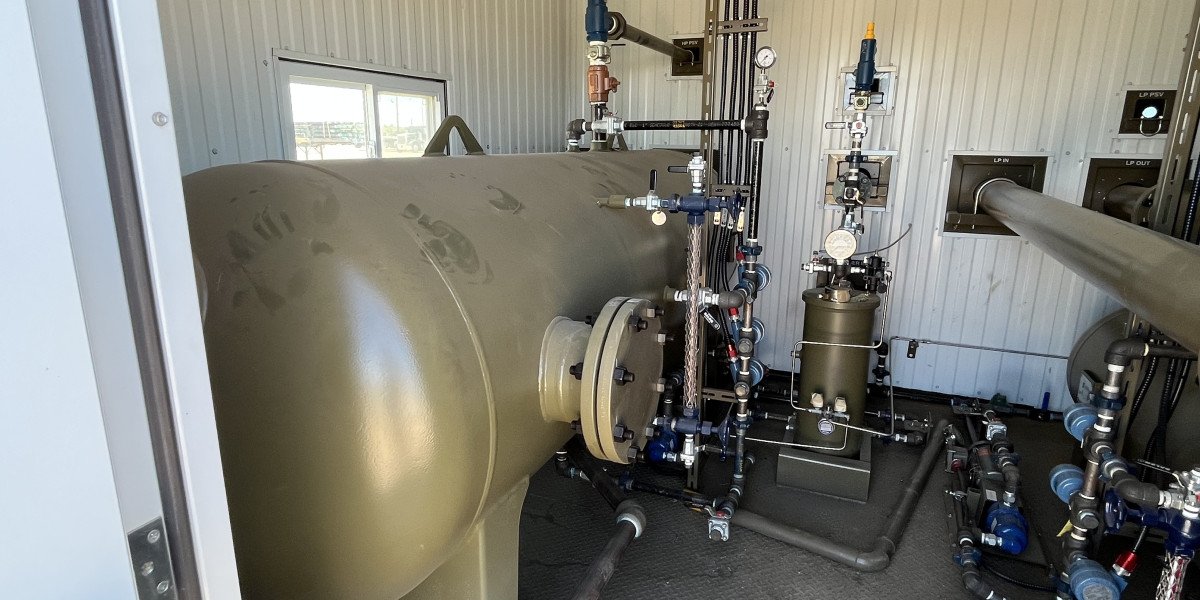In industries such as oil and gas, chemical processing, and power generation, efficient separation of fluids and particulates is critical to maintaining operational performance and protecting equipment. Filter separators are essential components in these sectors, designed to remove contaminants from liquids and gases, ensuring systems run smoothly and efficiently. With technological advancements continuously reshaping the landscape, filter separator technology is evolving to meet more complex industrial challenges.
This article explores the latest innovations in filter separator technology, discussing how these advancements are helping industries enhance efficiency, reduce operational costs, and meet stricter environmental regulations.
Understanding Filter Separator Technology
Filter separators are used to separate unwanted solid and liquid particulates from gases or liquids. In gas applications, they are often used in pipelines and processing plants to remove liquids such as water and hydrocarbons, as well as solid contaminants. In liquid applications, filter separators ensure that harmful particulates are eliminated to protect downstream equipment and maintain product purity.
How Filter Separators Work
The basic principle of a filter separator involves passing a fluid or gas through a filter medium that traps solid and liquid particles. The process is typically divided into two stages:
Coalescing: In this stage, the liquid or solid contaminants are coalesced (combined into larger droplets or particles) for easier removal.
Separation: The larger particles or droplets are then separated from the fluid or gas stream, leaving the cleaned product to continue through the system.
Key Applications of Filter Separators
Filter separators are widely used in several key industries:
Oil and Gas: These separators are used in natural gas processing, refinery operations, and oil production to remove contaminants like water, hydrocarbons, and particulates that can damage equipment or reduce process efficiency.
Chemical Processing: In chemical manufacturing plants, filter separators ensure the removal of impurities from process streams to maintain product quality and protect critical equipment.
Power Generation: Filter separators are used in power plants to remove moisture and solid contaminants from steam and gas flows, optimizing turbine and boiler performance.
Innovations in Filter Separator Technology
As industrial demands grow and environmental regulations become stricter, traditional filter separators are being re-engineered to offer better performance, higher efficiency, and lower operational costs. Here are some of the most exciting innovative approaches to filter separator technology.
1. Advanced Filter Media
One of the most significant advancements in hydrostatic pressure test is the development of advanced filter media. Traditional filter media often struggle with efficiency in separating fine particles or handling high contaminant loads. However, modern media use cutting-edge materials such as:
Nanofiber Technology: Nanofiber-based filter media can capture smaller particles more efficiently than traditional materials, increasing the overall filtration efficiency. These fine fibers create a more complex structure, enabling better separation of submicron particles and reducing pressure drops in the system.
Multi-layered Composites: Composite filter media that combine different materials and layers are capable of addressing multiple contaminants simultaneously. For example, a multi-layered filter could handle both liquid and solid particulates in a single stage, reducing the need for multiple separators and improving overall efficiency.
2. Self-Cleaning Systems
One of the primary challenges in filter separator technology is fouling, where contaminants clog the filter media, reducing its efficiency and increasing maintenance requirements. Self-cleaning filter separators have been developed to address this issue. These systems can automatically clean the filter media without halting the filtration process, reducing downtime and extending the life of the filter.
Some self-cleaning systems use backwashing, where a reverse flow of fluid is passed through the filter to dislodge trapped contaminants. Others use mechanical means, such as rotating brushes or scrapers, to clean the filter media.
3. High-Efficiency Coalescing Technologies
The coalescing stage of a filter separator is crucial for capturing and removing liquid aerosols from gases. Recent innovations in oil filter housing have significantly improved this process, especially in applications involving natural gas and compressed air systems.
Enhanced Coalescing Media: Newer materials used in coalescing media are more effective at promoting droplet growth while maintaining a low-pressure drop. This leads to higher separation efficiency without sacrificing system performance.
Magnetic Coalescence: For industries dealing with ferrous contaminants, magnetic coalescence is an innovative approach where magnetic fields are applied to attract and agglomerate iron particles, making them easier to filter out in the separation stage.
4. Smart Monitoring and Automation
Digitalization and smart monitoring technologies are rapidly making their way into the world of filtration and separation. By integrating sensors, IoT devices, and automation systems into filter separators, operators can now continuously monitor performance and receive real-time data on filter efficiency, contaminant levels, and system health.
Predictive Maintenance: With real-time data, operators can predict when filters will become clogged and require maintenance, allowing for timely interventions that prevent costly downtime.
Automatic System Adjustments: Smart systems can automatically adjust flow rates, pressure, or coalescence stages based on the detected contaminant levels, optimizing the filtration process dynamically.
5. Modular and Compact Designs
As industries look to minimize equipment footprints and reduce the complexity of their systems, modular and compact filter separator designs have emerged as a vital innovation. These new designs allow filter separators to be customized for specific applications and installed in tighter spaces without sacrificing performance.
Modular Systems: Modular filter separators are designed to be scalable, so operators can add or remove filter modules depending on system requirements. This reduces installation time and allows for easier future expansions.
Compact Units: Innovations in design have led to more compact filter separators, ideal for offshore platforms, mobile units, and other constrained environments where space and weight are critical considerations.
Environmental Considerations and Compliance
One of the driving forces behind recent innovations in filter separator technology is the increasing pressure from regulatory bodies to reduce environmental impact. Many of the latest designs aim to minimize emissions, reduce waste, and improve energy efficiency.
Reduced Emissions: New filter separators are designed to capture harmful emissions more effectively, helping companies meet stringent air quality regulations, particularly in the oil and gas industry.
Waste Reduction: Innovations such as self-cleaning systems and advanced filter media reduce the need for frequent filter replacements, minimizing waste and lowering disposal costs.
Energy Efficiency: Modern filter separators are being optimized for energy efficiency, with features such as low-pressure drop media and energy-efficient pumps, which help lower operational costs and reduce carbon footprints.
Future Trends in Filter Separator Technology
The future of filter separator technology looks bright, with several key trends set to shape the industry:
Green Technologies: As environmental concerns continue to grow, expect more innovations focused on sustainable and eco-friendly filtration solutions. Technologies that reduce energy consumption, improve waste management, and meet environmental regulations will be in high demand.
Customization for Niche Industries: As industrial processes become more specialized, filter separator designs will become more customizable, tailored to meet the specific demands of niche industries like biotechnology, pharmaceutical manufacturing, and renewable energy production.
Integration with AI and Machine Learning: The use of artificial intelligence and machine learning to optimize filtration processes in real time is an exciting frontier. By analyzing data collected from smart sensors, AI can provide insights to improve performance, efficiency, and reliability over time.
Conclusion
The evolution of filter separator technology is transforming how industries manage filtration processes, improving efficiency, reducing maintenance costs, and enhancing environmental compliance. From advanced filter media and self-cleaning systems to smart automation and compact designs, these innovations are making filtration systems more reliable and adaptable to modern industrial demands.
 AdBlock Detectado
AdBlock Detectado








